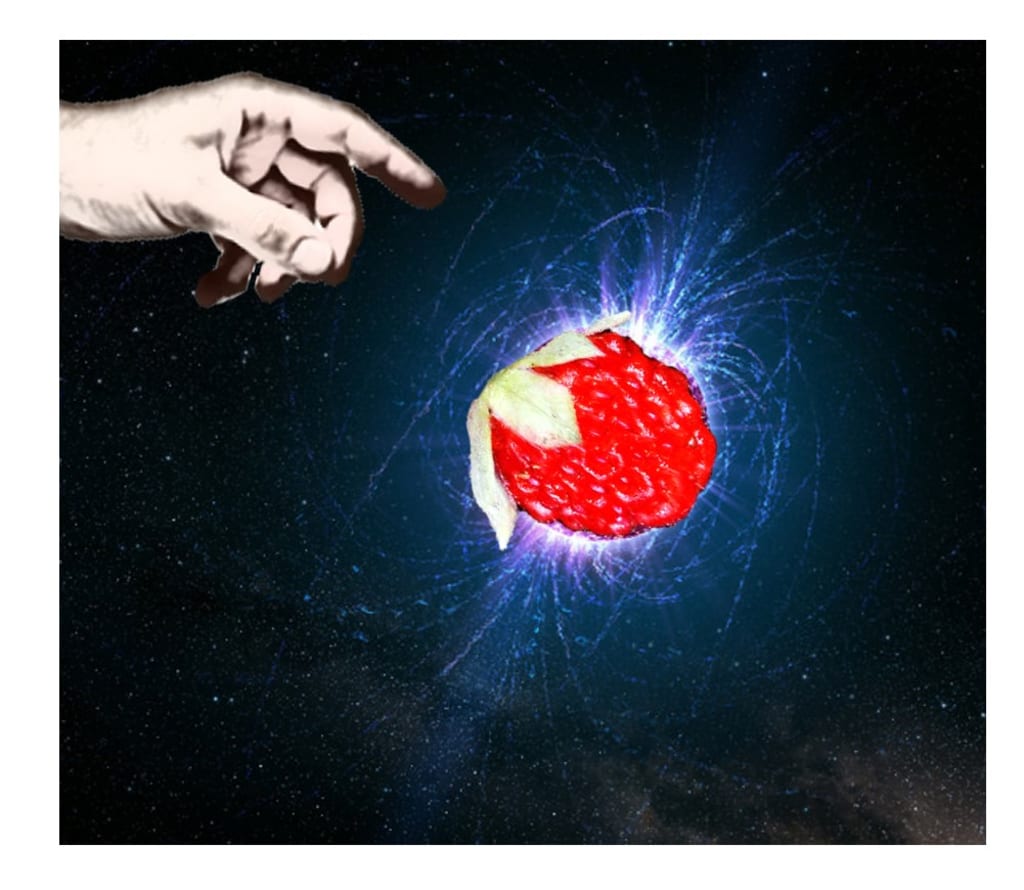
Had you asked me in my youth to name the most iconic summer food, I likely would have gone with an orange popsicle. Sweet and mouth-chilling, forming thin icy flakes where your teeth split a bite free of the wooden stick subtly stained with a yellow dye 6/red dye 40 mix perfectly blended to produce glorious orange translucence with that summer sun shining through. Iconic. I mean, I suppose you could eat them in other seasons, but what would be the point?
However, one field day many years later a new food was anointed king.
I was a decidedly grown-up biologist and we were working on a meadow project, assessing characteristics of high mountain meadows in our study area and identify problems that management might be able to address. We specifically hoped to repair their ability to hold water higher in the watersheds as climate change continues to melt mountain snowpack earlier each year.
We were excited to find that through careful examination of aerial photos we were able to more than double the number of previously mapped meadows – there were over 800! Excited, that is, until the full reality hit of what it was going to take to visit a fair sample of those hundreds and hundreds of meadows. As the first field season wore on, we discovered that not only were many of the meadows really far from roads and surrounded by jack-strawed lodgepole pine logs, they often hosted robust mosquito populations as well as the occasional mother black bear who would pop up over the shrubs to let us know we were getting too close to her cubs.
In spring and early summer, the high meadows were mercifully cool even as the desert valleys below heated to temperatures I considered frankly uninhabitable (notwithstanding the contrary evidence of numerous small to large cities persisting in said valley). But by mid-summer the heat baked its way up the slopes until even the highest elevation sites we reserved for late season soared well past 90°F by midday.

We had completed one survey in the morning - a meadow ringed by lovely spiraea shrubs lavishly adorned with tall pink plumes, with the broad wet center covered in thick sedges and some of our favorite flowers, such as gracefully spiraling white lady’s tresses and aptly named elephant head.
It grew warmer with every step as we trudged away from the meadow back to the truck, and there was a revived debate as to whether the diuretic effects of Diet Coke were bad enough to present a net loss in combating dehydration. I played my usual role as staunch advocate for the beverage I faithfully dubbed Nectar of the Gods, but when we opened the blast furnace of a vehicle to retrieve our lunches, my drink showed all the appreciation for my support as a post-election Congressman. The sickly sweet warm froth issuing forth from that can deserved no defense, and I poured most out and resorted to the plain flat water in my bottle as we packed in to the hot truck to move on to the next site.
I realized my mistake as I took the last warm swig of my water early on the next survey – a large meadow much drier than the morning’s site, with grasses worn to bare dirt where cattle, elk, and feral horses habitually congregated along the trampled banks of the muddy trickle of a stream. I had packed way too little water. I was starting to miss my footing more often as I made my way up to document the condition of the stream where it entered the meadow. Sweat was drying to a stinging layer of salt on my reddening face and the growing irritation of field vest seams alongside my neck hinted at a burn forming where the sunscreen had worn off.
It was as I rejoined my coworkers Kristi and Pat to examine a two-track road coming in from the top of the meadow that the discovery was made. Flecks of red among the loose sprawl of deep green leaves lining a dirt track.
“Are those tiny strawberries?” I asked.
“Heck yeah!” they replied, crouching down to pluck and eat miniscule red berries. I knelt down to look. They were so very, very small. I would say the size of a pinky fingernail, but most could merely aspire to such dimensions. I started pushing leaves around but with the obvious ones already plucked, it was difficult to find more, nestled low against the sandy soil as they were. It hardly seemed worth the effort. Especially given how eager I was to be done with our work and back down to a wondrous world where commonplace machines dispensed cold Diet Cokes.
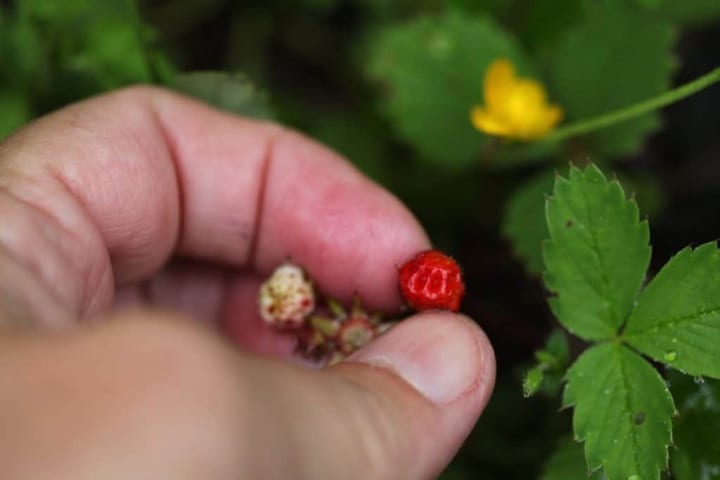
“Um, how much of this is dirt versus cow and horse poop, do you suppose?” I asked. Pat laughed and brushed a berry off on her sleeve before popping it in her mouth. I finally found a cluster, crushing the first one to a tiny blob of unsalvageable pulp in my attempt to pull it free. The second one I managed to extract and delicately brush off before sampling.
Oh my lord! It was like the full flavor of a golf-ball-sized grocery store strawberry had somehow been condensed into this tiny package. Indeed, it was the veritable neutron star of strawberries, formed of the collapsed core of a red farmed supergiant. It was almost too much of a shock for my parched tongue.
We all foraged on with gusto, taking the flaky leaves and bits of grit as discountable parts of the package.

Now I am always on the lookout for these tiny miracles when I’m on a summer hike. If you live in the US or Canada, at least one of our native species of wild strawberries are sure to occur in your state or province, so the odds are high that you can find some as well. (For instance, click here for some more info about the common woodland strawberry.)
Now, how about a great recipe for using your harvest?
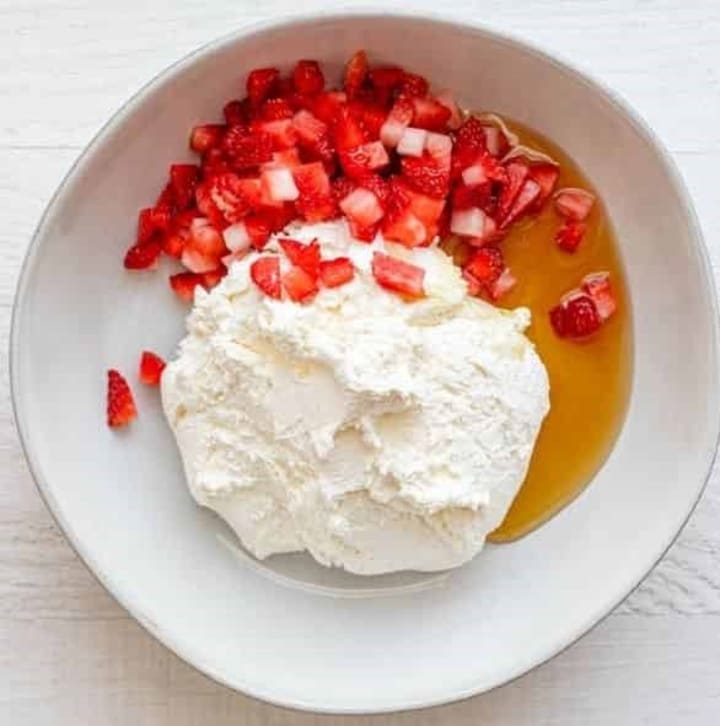
Ha ha ha ha, who am I kidding? Nobody picks enough of these little nuggets of goodness to bring them home! Or if anyone does, they are clearly on some fanatical mission with a specific use in mind. More power to you, but the rest of us will just enjoy those few little morsels of distilled essence of summer as we find them.
About the Creator
Gina King
Wildlife biologist, Northwesterner, reluctant passenger in this wild 21st century ride.


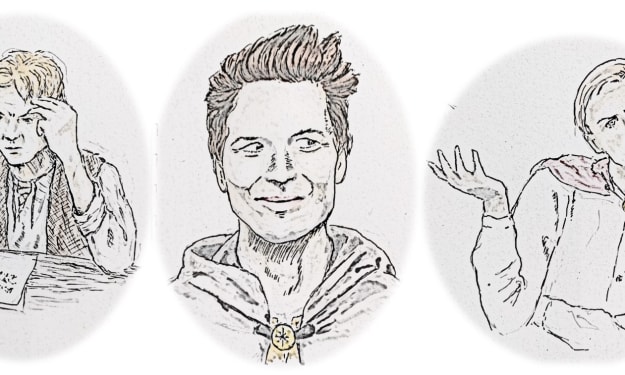
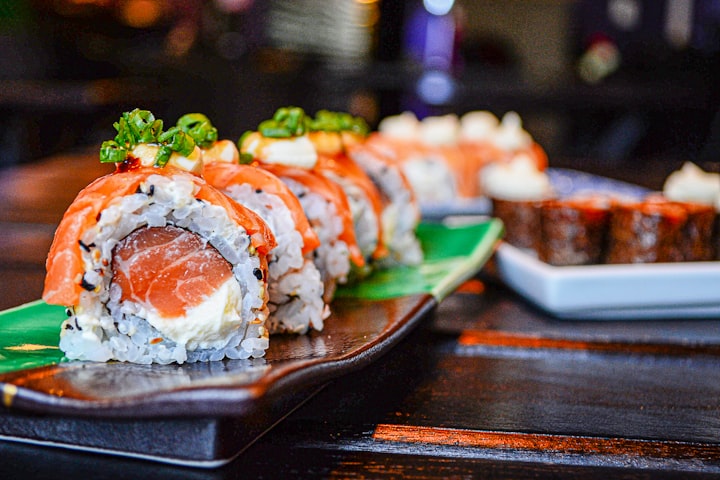


Comments (1)
This comment has been deleted
The title pulled me and I enjoyed it. Makes me recall berry-hunting of my own. :)